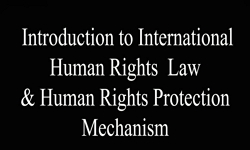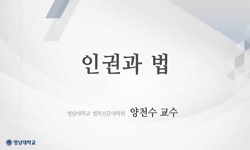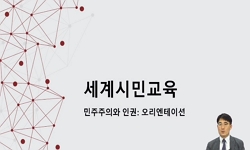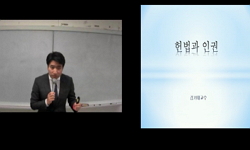본 연구의 목적은 교육행정에서의 성차별의 개념, 유형, 그리고 판단기준에 관한 국가인권위원회 결정의 한계를 지적하고 그 대안을 제시하는 것이다. 본 연구의 주요 결과는 다음과 같다. ...
http://chineseinput.net/에서 pinyin(병음)방식으로 중국어를 변환할 수 있습니다.
변환된 중국어를 복사하여 사용하시면 됩니다.
- 中文 을 입력하시려면 zhongwen을 입력하시고 space를누르시면됩니다.
- 北京 을 입력하시려면 beijing을 입력하시고 space를 누르시면 됩니다.
https://www.riss.kr/link?id=A107884946
- 저자
- 발행기관
- 학술지명
- 권호사항
-
발행연도
2007
-
작성언어
Korean
- 주제어
-
등재정보
KCI등재
-
자료형태
학술저널
- 발행기관 URL
-
수록면
165-187(23쪽)
- 제공처
- 소장기관
-
0
상세조회 -
0
다운로드
부가정보
국문 초록 (Abstract)
본 연구의 목적은 교육행정에서의 성차별의 개념, 유형, 그리고 판단기준에 관한 국가인권위원회 결정의 한계를 지적하고 그 대안을 제시하는 것이다. 본 연구의 주요 결과는 다음과 같다. 첫째, 이 결정은 차별금지사유로서의 성별과 성 관련요소들을 명확하게 구별하지 아니하고 있고 성차별을 생물학적 성 및 사회문화적 성에 근거한 공평에 반하는 것으로 이해하고 있으나 공평의 개념, 판단주체, 판단기준의 불명확성과 헌법상 평등권과의 관계 및 남녀고용평등법 제2조 제1항에 규정된 성차별 개념의 사용 여부의 비일관성 및 그 근거의 불분명성이라는 한계를 지니고 있으며 그 대안은 공평을 어느 한 쪽으로 기울거나 치우치지 않는 것으로 규정하고 성차별을 헌법상 평등권의 문제로 간주하면서 국가인권위원회법 제2조 제4항에 규정된 성차별의 개념을 사용하는 것이다. 둘째, 국가인권위원회는 성차별을 직접차별과 간접차별, 수평적 차별과 수직적 차별로 구분하고 있으며 성희롱의 법적 성격을 성차별, 인격권 및 성적 자기결정권 침해, 성희롱 등으로 이해하고 있으나 간접차별은 입법자 및 사용자의 재량권을 현저히 축소시키고 형평성 논란을 야기할 위험성이 있으므로 현행 법령의 태도에 따라 성별에 근거한 고용차별의 경우에만 인정하고 성희롱의 법적 성격은 인격권 및 성적 자기결정권을 침해하는 불법행위로 규정할 필요가 있다. 셋째, 국가인권위원회는 직접차별의 판단기준으로 남녀고용평등법 제2조 제1항에 규정된 필수적 직무자격요건과 비례의 원칙을 사용하고 있으나 전자의 경우 사용 근거 및 용도를 명확하게 제시하지 아니하고 있고 후자의 경우 차별의 합리성을 차별의 비례성으로 대체하는 모순이 있으므로 고용차별 이외의 경우에는 이러한 필수적 직무자격요건 대신에 자의금지의 원칙에 따른 심사를 할 필요가 있다. 끝으로, 국가인권위원회는 간접차별을 남녀고용평등법 제2조 제1항에 규정된 간접차별의 개념에 따라 심사하고 있으나 통계적 증거의 모집단 선정 근거 및 성별 중립성 판단준거의 불명확성, 해당 기준과 차별적 결과와의 관계의 성격에 대한 혼란, 행정상 필요성의 판단기준의 혼란 등의 문제점을 지니고 있으며 그 대안은 모집단을 사건의 유형에 따라 달리 선정하고 간접차별의 한계를 감안할 때 해당 기준과 차별적 결과의 관계를 인과관계로 파악하고 행정상 필요성을 폭넓게 인정하는 것이다.
다국어 초록 (Multilingual Abstract)
The major purpose of the study is to analyze the limitations of and the alternatives to the National Human Rights Commission of the Republic of Korea's decisions on the definitions, types, and criteria of sex discrimination in educational administrati...
The major purpose of the study is to analyze the limitations of and the alternatives to the National Human Rights Commission of the Republic of Korea's decisions on the definitions, types, and criteria of sex discrimination in educational administration critically. The major findings are as follows. First, the commission did not distinguish sex and sex-related factors as the reasons for prohibiting sex discrimination clearly. Also, it considered both sex discrimination and gender discrimination. Next, it regarded discrimination as an antonym of fairness. Finally, it considered discrimination against both females and males as sex discrimination.
However, these definitions have some weak points. First, as the reasons for prohibiting sex discrimination, the distinction between sex and sex-related factors is not clear. Furthermore, the definition of fairness and the subject and criteria for judging it are ambiguous. Finally, the relationship between sex discrimination and the equal protection clause and the use of the definition of sex discrimination stipulated in the Equal Employment between Male and Female Act Article 2 Section 1 is not consistent.
The alternatives to these weak points are as follows. First, it is necessary to distinguish between sex and sex-related factors as the reasons for prohibiting sex discrimination. Also, it is necessary to regard consider fairness as the absence of skew, consider both the substantial fairness and the procedural one, and judge it on the basis of the logical evidence instead of the perception of the parties interested. Next, it is necessary to judge sex discrimination on the basis of whether sex is the essential mark to justify different treatment. Finally, it is desirable to regard sex discrimination in relation to the equal protection clause and to use the definition of sex discrimination stipulated in National Human Rights Commission of the Republic of Korea Act article 2 section 4.
Second, the National Human Rights Commission of the Republic of Korea classified sex discrimination as the direct discrimination and the indirect discrimination and the horizontal discrimination and the vertical discrimination. However, it is desirable to recognize only the indirect sex discrimination in employment because the indirect discrimination can reduce the law-maker's and the employer's latitude very much and cause the equity issues.
Also, the commission regarded the legal nature of sexual harassment as sex discrimination, the infringement of the right to personality and self-determination in sex, sexual harassment, etc. However, it is desirable to regard sexual harassment as tort for securing the consistency with the classification of sex discrimination by the National Human Rights Commission of the Republic of Korea Act and considering that sexual harassment can engender disadvantages in employment and the hostile work environment.
Third, the National Human Rights Commission of the Republic of Korea judged the direct sex discrimination on the basis of the bona fide occupational qualifications and the anti-over-restriction principle. However, the commission did not specify why and when it used the former clearly. Also, the latter is weak by changing the rationality of discrimination to its ratio. The alternative is to use the principle of the prohibition of arbitrariness except for sex discrimination in employment.
Last, the National Human Rights Commission of the Republic of Korea judged the indirect sex discrimination on the basis of the definition of sex discrimination stipulated in the Equal Employment between Male and Female Act article 2 section 1. This judgement has some, weak points: the ambiguity of the evidence for selecting the population and the criteria for judging sex neutrality and the confusion about the criteria for judging business necessity. The alternative is to select the population on the basis of the type of the case differently and to broaden t
목차 (Table of Contents)
- 요약
- Ⅰ. 서론
- Ⅱ. 국가인권위원회법에서의 성차별의 개념과 유형
- Ⅲ. 교육행정에서의 성차별의 개념
- Ⅳ. 교육행정에서의 성차별의 유형
- 요약
- Ⅰ. 서론
- Ⅱ. 국가인권위원회법에서의 성차별의 개념과 유형
- Ⅲ. 교육행정에서의 성차별의 개념
- Ⅳ. 교육행정에서의 성차별의 유형
- Ⅴ. 교육행정에서의 성차별의 판단기준
- Ⅵ. 결론 및 제언
- 참고문헌
- Abstract
동일학술지(권/호) 다른 논문
-
- 한국교육행정학회
- 이제봉(Jebong Lee)
- 2007
- KCI등재
-
- 한국교육행정학회
- 이윤식(Lee Yun Sik)
- 2007
- KCI등재
-
- 한국교육행정학회
- 표시열(Pyo Si-Yeul)
- 2007
- KCI등재
-
- 한국교육행정학회
- 김덕근(Deok-Keun Kim)
- 2007
- KCI등재





 DBpia
DBpia







